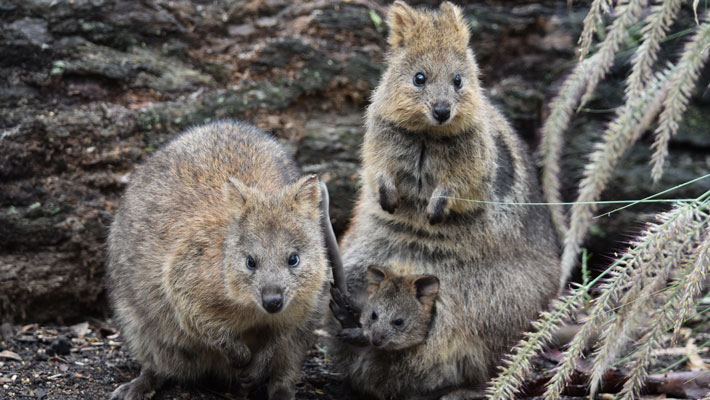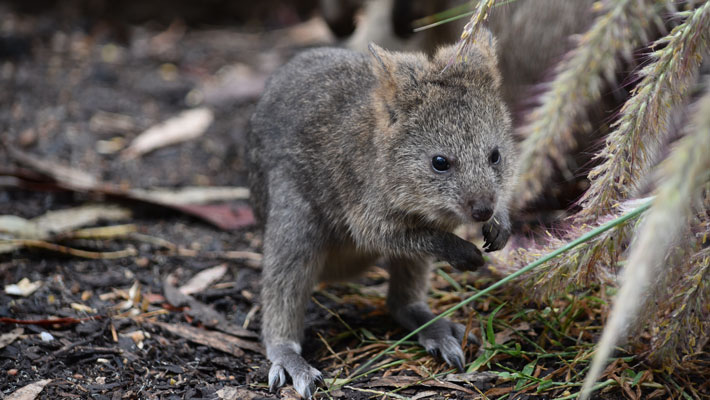Posted on 31st March 2022 by Media Relations
There is nothing quite comparable to seeing a marsupial joey experience the world outside of the pouch for the first time.
Taronga Western Plains Zoo is very excited about a little Quokka head popping out of its mum’s pouch in the Australian walk-through exhibit. Female Quokka, Wir has a big bundle onboard and she’s not hiding it very easily. The joey, who is yet to have its sex determined, can regularly be seen with its head out, taking in the big outside world, all from the safety of mum’s pouch.
“The little joey is getting bigger everyday and nearly always a tail, head or foot are popping out of Wir’s pouch,” Australian Fauna keeper, Lou said. Keepers recorded observations of the Quokka pair, Kylo and Wir interacting in September, meaning the joey is approximately 6-months old.

Quokkas have a gestation of only 28-days, where they then give birth to a rice grain-sized joey. The joey is born hairless and under-developed and makes its way into the females pouch to continue its development. Quokka joeys spend approximately five months attached to the mothers’ teat in the safety and warmth of the pouch. As the joey starts to develop fur, it takes opportunities to peek out of the pouch opening and start trying any solid foods it can reach when the mum leans close to the ground.
Taking advantage of the food and browse the keepers provide to Wir and Kylo daily, the joey has shown a strong appetite for casuarina browse, spinach and root vegetables, like carrots and sweet potato.
Keeper Lou said: “Quokka mum, Wir is encouraging the joey to come all the way out of the pouch so she can give the pouch a thorough clean. The joey is still finding its feet and not venturing too far from mum, but it’s a cute sight to see a young joey out and about.”

“The best time to spot Wir and the joey is at midday in the shared koala exhibit in the Australian walk-through. Although the joey is likely to be in the pouch a few more weeks, it is becoming increasingly more confident out of the pouch and won’t be able to fit for much longer.”
Quokkas are crepuscular and nocturnal, meaning that they are most active late in the afternoon, throughout the night and in the cooler parts of the morning. Throughout the day, the Quokkas are usually spotted having a nap in amongst the grasses, head resting on the ground between their legs – what a way to spend the day.